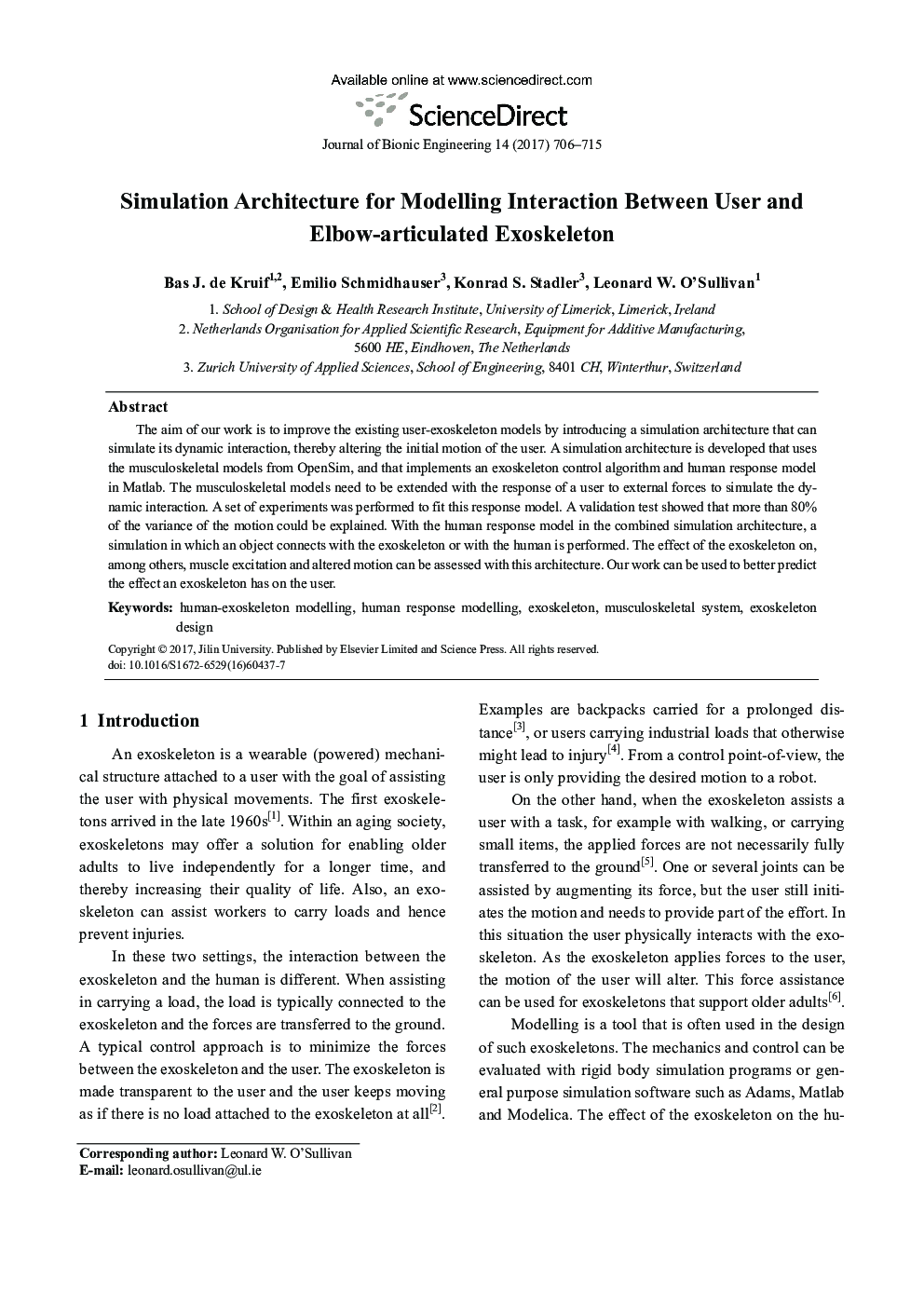| Article ID | Journal | Published Year | Pages | File Type |
|---|---|---|---|---|
| 7216454 | Journal of Bionic Engineering | 2017 | 10 Pages |
Abstract
The aim of our work is to improve the existing user-exoskeleton models by introducing a simulation architecture that can simulate its dynamic interaction, thereby altering the initial motion of the user. A simulation architecture is developed that uses the musculoskeletal models from OpenSim, and that implements an exoskeleton control algorithm and human response model in Matlab. The musculoskeletal models need to be extended with the response of a user to external forces to simulate the dynamic interaction. A set of experiments was performed to fit this response model. A validation test showed that more than 80% of the variance of the motion could be explained. With the human response model in the combined simulation architecture, a simulation in which an object connects with the exoskeleton or with the human is performed. The effect of the exoskeleton on, among others, muscle excitation and altered motion can be assessed with this architecture. Our work can be used to better predict the effect an exoskeleton has on the user.
Keywords
Related Topics
Physical Sciences and Engineering
Engineering
Biomedical Engineering
Authors
Bas J. de Kruif, Emilio Schmidhauser, Konrad S. Stadler, Leonard W. O'Sullivan,
